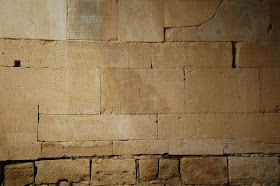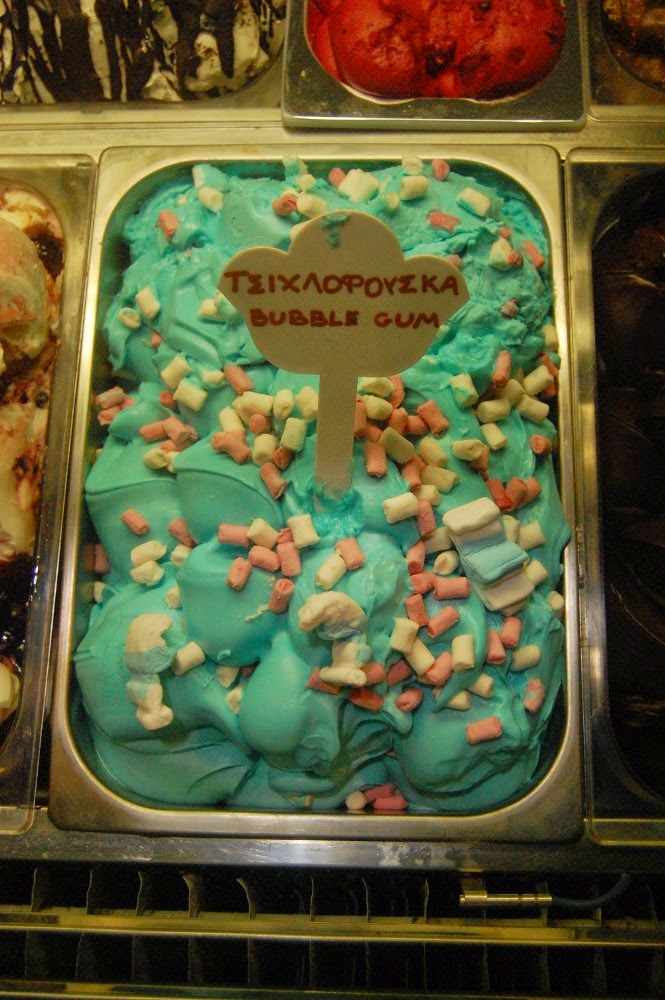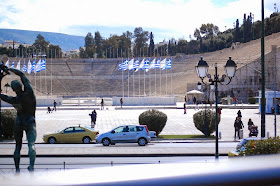Meet the kitty who photobombed the ruins of ancient Malia, a Minoan city on Crete. This little charmer appointed herself our guide, and proceeded to show us around in a most proprietary way.
For anyone wanting to catch up with the earlier three posts in this series, follow these links for posts about Athens; about Nafplio, Epidaurus, Tiryns, and Mycenae; and about Crete (Siva, Knossos, Phaistos, and Aghia Triada).
Malia, a Minoan city on the northern edge of Crete and east of Iraklion, was not the last archaeological site we visited, but it was the last major site.
This last picture is the famous bee pendant, found in Malia and now on display at the archaeological museum in Iraklion. It's an exquisite little piece of intricate goldwork from the middle Bronze Age.
I've not said much about any of the places featured in these posts, relying mostly on pictures. But if you are interested in such things, I would urge you to seek out information about them. The history is fascinating. I learned a lot about Greece, past and present, in preparation for this trip, but I'm no expert, and I'd suggest that you seek out those who are, because Greek history touches every aspect of western civilization. And for those who have not been paying attention to Greece's current economic and political crises, I would urge you to take a look at that, too - it's a David and Goliath tale with no foregone conclusion.
England
So many of the great Greek antiquities have wound up in England that it seemed only appropriate to end our trip with a stop in London and a visit to the British Museum, always one of our favorite places.
 |
| Phidias showing the frieze of the Parthenon to his friends, Lawrence Alma-Tadema, 1868 |
The new Acropolis Museum in Athens has rather pointedly left places for these friezes and sculptures, should they ever be returned. Here are two pictures of some of the Parthenon sculptures in the British Museum:
I'll leave you now with one last image. One decorative theme we encountered over and over again, especially on Crete, was the octopus. (It also turned up in pretty much every restaurant we ate in.) What amused us most was that most of these sea critters are pictured with huge round eyes, communicating utter surprise, as if they are shocked - shocked! - to find themselves decorating pots and vases. So I can't bring this series of posts to an end without providing you with at least one amazed octopus.
Images in this post are our own photos or in the public domain, with these exceptions: the bee pendant is by Olaf Tausch and licensed to Oltau via the Creative Commons Attribution 3.0 Unported license; the photo of the Parthenon Galleries is by Mujtaba Chohan and licensed to M.chahan via the Creative Commons Attribution-Share Alike 3.0 Unported license; and the picture of the surprised octopus on the pot is by Wolfgang Sauber, licensed to Xenophon via the Creative Commons Attribution-Share Alike 3.0 Unported license.







_%2B_North_Slip_Room%2C_-Full_Elevation_%26_Viewing_North-.JPG)





.jpg)















































